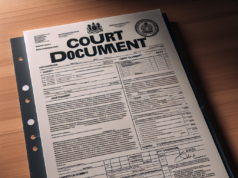
MONTANA CHILD SUPPORT LAWS & REGULATIONS UPDATE 2023
A DECADE OF CHANGE: AN OVERVIEW OF MONTANA’S CHILD SUPPORT LAWS AND REGULATIONS TIMELINE (2013-2023)
Montana’s child support laws have seen important changes over the past decade to ensure children’s financial well-being while considering parents’ circumstances.
2013: Child Support Guidelines Update
– Regular updates of child support guidelines to align with economic realities.
2014: Holistic Child Well-being Focus
– Emphasis on the overall well-being of the child in child support considerations.
2015: Efficient Payment Disbursement
– Implementation of efficient methods for disbursement of child support payments.
2016: Responsive to Changing Dynamics
– Consideration of changing family dynamics in child support calculations.
2017: Strengthening Enforcement Measures
– Introduction of robust enforcement measures for consistent child support payments.
2018: Income Verification Enhancements
– Introduction of improved income verification methods for accurate calculations.
2019: Simplified Modification Procedures
– Simplification of child support modification procedures for parents’ convenience.
2020: Online Resources Accessibility
– Provision of online resources for parents to manage child support cases.
2021: Ongoing Guidelines Review
– Continuous review and updates of child support guidelines.
2022: Shared Parenting Support
– Emphasis on shared parenting arrangements for fair support calculations.
Montana’s child support regulations reflect its commitment to children’s well-being and parents’ responsibilities, ensuring a balanced approach to support calculations.
The Montana Child Support Enforcement Division automatically serves families on public assistance to serve as a supplement to these benefits.
Fees for families not on public assistance are scaled according to household income with families making over $20,000 paying the maximum $25 fee.
Children must have medical insurance coverage in Montana and the amount of child support will reflect this. Child support arrangements can be reviewed every three years or in the event that either parent experiences a significant change in finances, such as unemployment or a windfall.
Payments are usually disbursed electronically through debit cards, but a conventional paper check can also be issued. Montana authorities can work with authorities in other states to ensure that the proper payments are made. Contact Montana lawyers for legal advice and assistance.



























